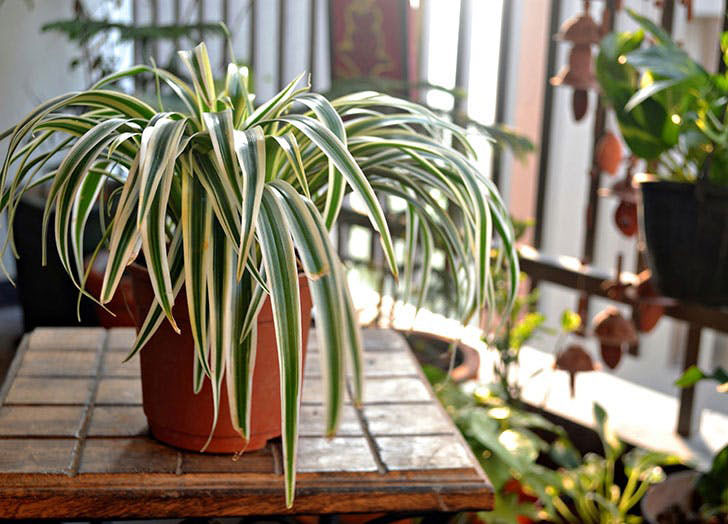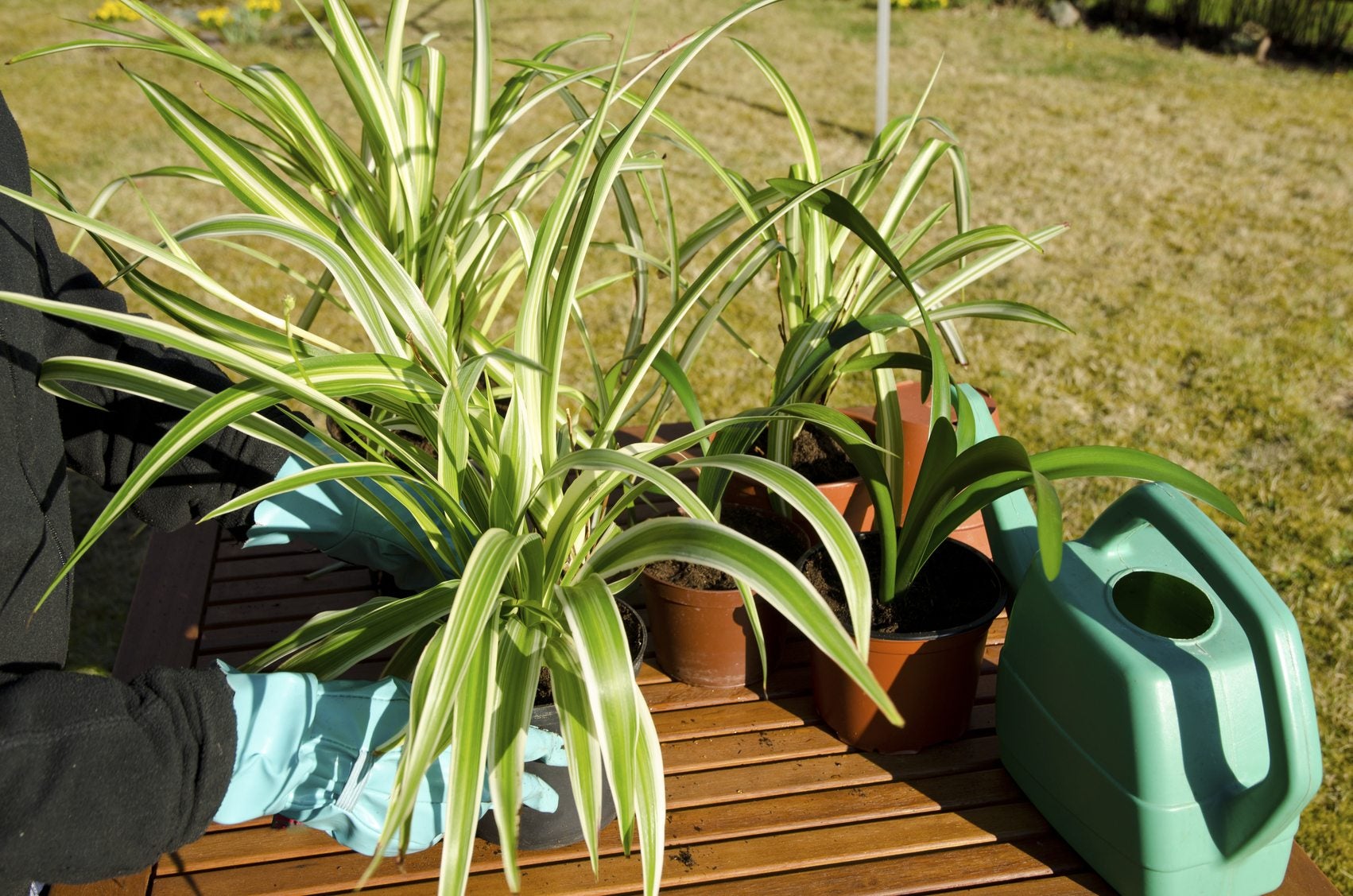Discover the Origins of this Popular Houseplant
The spider plant, scientifically known as Chlorophytum comosum, is a popular houseplant that has been a staple in many homes for decades. Native to South Africa, this plant has a rich history that dates back to the 18th century. It was first introduced to Europe by Dutch colonizers, who brought it back from their colonies in South Africa. The question “what is a spider plant” is often asked by those who are new to the world of houseplants, and the answer lies in its unique characteristics and benefits. Today, it is one of the most common houseplants found in homes and offices around the world, and its popularity can be attributed to its low-maintenance care and ability to thrive in a variety of environments. But what makes this plant so special, and why is it a popular choice among plant enthusiasts?
What Makes Spider Plants So Special?
So, what is a spider plant, and what makes it so unique? One of the most impressive features of spider plants is their ability to purify the air. They are known to remove pollutants and toxins from the air, making them a great addition to any home or office. This is especially important in today’s world, where air pollution is a growing concern. Spider plants are also prolific producers of baby plants, which can be easily propagated to create new plants. This makes them a great option for those who want to share plants with friends and family, or for those who want to create a lush, green space. Additionally, spider plants are incredibly versatile and can thrive in a variety of lighting conditions, from bright indirect light to low light. This makes them a great option for rooms with limited natural light.
How to Care for Your Spider Plant: Tips and Tricks
When it comes to caring for a spider plant, it’s essential to provide the right conditions for it to thrive. Watering is a crucial aspect of spider plant care. Spider plants prefer well-draining soil and should be watered thoroughly, allowing the soil to dry slightly between waterings. Overwatering can lead to root rot, so it’s essential to monitor the soil moisture. Fertilizing is also important, and a balanced fertilizer can be applied during the growing season to promote healthy growth. Pruning is another essential task, as it helps to maintain the plant’s shape and encourages new growth. Simply trim off any dead or damaged leaves, and cut back any long stems to encourage branching.
Propagating spider plants is also a relatively simple process. Spider plants produce baby plants, or spiderettes, which can be easily removed and potted up to create new plants. This is a great way to share plants with friends and family, or to create a lush, green space. To propagate a spider plant, simply remove the spiderette from the mother plant, pot it up in a well-draining potting mix, and keep the soil consistently moist. With proper care, the new plant will quickly establish itself and begin to thrive.
The Benefits of Having a Spider Plant in Your Home
So, what is a spider plant, and why should you consider bringing one into your home or office? One of the most significant benefits of having a spider plant is its ability to purify the air. Spider plants are known to remove pollutants and toxins from the air, making them a great addition to any space. This is especially important in today’s world, where air pollution is a growing concern. By having a spider plant in your home, you can breathe easier knowing that the air is cleaner and healthier.
In addition to improved air quality, spider plants have also been shown to have a positive impact on mental health. Studies have found that being around plants can reduce stress and anxiety, and even boost productivity. This makes spider plants a great addition to any workspace or home office. Plus, their calming presence can help to create a sense of tranquility and relaxation.
Spider plants are also low-maintenance and easy to care for, making them a great option for busy people or those new to plant care. They can thrive in a variety of lighting conditions, from bright indirect light to low light, making them a great option for rooms with limited natural light. Overall, the benefits of having a spider plant in your home or office are numerous, and they make a great addition to any space.
Common Spider Plant Varieties and Their Characteristics
While the traditional spider plant (Chlorophytum comosum) is a popular choice, there are several other varieties that offer unique characteristics and features. One of the most popular varieties is the Variegated Spider Plant, which features leaves with white or yellow stripes. This variety is known for its striking appearance and is often used in decorative planters or hanging baskets.
Another popular variety is the Bonnie Spider Plant, which is known for its compact growth habit and smaller leaves. This variety is ideal for small spaces or for those who want a more compact spider plant. The Bonnie Spider Plant is also known for its ability to produce more plantlets than other varieties, making it a great choice for those who want to propagate new plants.
Other varieties of spider plants include the Vittatum Spider Plant, which features leaves with yellow or white edges, and the Curly Spider Plant, which has curly or wavy leaves. These varieties offer a range of unique characteristics and features, making them a great choice for those who want to add some visual interest to their space.
Regardless of the variety, spider plants are known for their ease of care and ability to thrive in a range of lighting conditions. They are also great air purifiers, making them a popular choice for homes and offices. Whether you’re a seasoned plant enthusiast or just starting out, there’s a spider plant variety that’s sure to fit your needs.
How to Propagate Spider Plants: A Step-by-Step Guide
One of the most exciting things about spider plants is their ability to produce baby plants, or spiderettes, which can be easily propagated to create new plants. Propagating spider plants is a great way to share them with friends and family, or to create new plants for your own home or office. Here’s a step-by-step guide on how to propagate spider plants:
Step 1: Wait for the Spiderettes to Form – Spider plants produce spiderettes on the ends of long stems. Wait until the spiderettes have formed and are about 1-2 inches in diameter.
Step 2: Remove the Spiderettes – Carefully remove the spiderettes from the mother plant by cutting the stem about an inch below the base of the spiderette. Make sure to leave a small amount of stem attached to the spiderette.
Step 3: Pot the Spiderettes – Plant the spiderettes in a small pot or container filled with well-draining soil. Water gently to settle the soil.
Step 4: Care for the New Plants – Keep the soil consistently moist, but not waterlogged. Provide bright, indirect light and maintain a temperature of around 65-75°F (18-24°C).
Step 5: Watch Them Grow – Within a few weeks, the new plants will start to grow and thrive. Once they have reached about 6-8 inches in diameter, they can be transplanted into larger pots or containers.
By following these simple steps, you can easily propagate spider plants and share them with others. Remember, what is a spider plant if not a symbol of growth and renewal? By propagating spider plants, you can spread the joy and benefits of these amazing plants to others.
Troubleshooting Common Spider Plant Problems
While spider plants are relatively low-maintenance and easy to care for, they can still encounter some common problems. Here are some troubleshooting tips to help you identify and solve common issues that may arise when caring for your spider plant:
Yellowing Leaves – Yellowing leaves can be a sign of overwatering, underwatering, or too much direct sunlight. Check your watering schedule and adjust accordingly. If the problem persists, consider moving your spider plant to a spot with bright, indirect light.
Root Rot – Root rot is a common problem that can occur when the soil is too wet or waterlogged. To prevent root rot, make sure to use a well-draining potting mix and avoid overwatering. If you suspect root rot, remove the plant from the pot, trim away any affected roots, and repot in fresh soil.
Pests – Spider plants can be susceptible to pests like spider mites, mealybugs, and scale. Check your plant regularly for any signs of pests and treat promptly if you notice any issues. Isolate infested plants to prevent the pests from spreading to other plants.
Brown Tips – Brown tips on the leaves can be a sign of dry air or too much direct sunlight. To prevent brown tips, mist your spider plant regularly to maintain a humid environment. You can also try moving your plant to a spot with bright, indirect light.
Leggy Stems – Leggy stems can occur when the plant is not getting enough light. To prevent leggy stems, make sure to provide your spider plant with bright, indirect light. You can also try pruning the stems to encourage bushy growth.
By being aware of these common problems and taking steps to prevent them, you can keep your spider plant happy and healthy. Remember, what is a spider plant if not a symbol of growth and renewal? With proper care and attention, your spider plant can thrive and bring joy and benefits to your home or office.
Conclusion: Why Spider Plants Make the Perfect Houseplant
In conclusion, the spider plant is a remarkable houseplant that offers a multitude of benefits and unique features. With its ability to purify the air, produce baby plants, and thrive in a variety of lighting conditions, it’s no wonder why it has become a popular choice for many plant enthusiasts. By following the simple care tips and troubleshooting common problems, anyone can enjoy the benefits of having a spider plant in their home or office.
What is a spider plant if not a symbol of growth and renewal? It’s a plant that can bring joy and freshness to any space, and its low-maintenance requirements make it an ideal choice for busy individuals. Whether you’re a seasoned plant enthusiast or a beginner, the spider plant is an excellent addition to any indoor space.
So, if you’re looking for a plant that can improve air quality, reduce stress, and increase productivity, look no further than the spider plant. With its versatility, ease of care, and unique features, it’s the perfect houseplant for anyone. By incorporating a spider plant into your home or office, you’ll be enjoying the many benefits it has to offer in no time.








